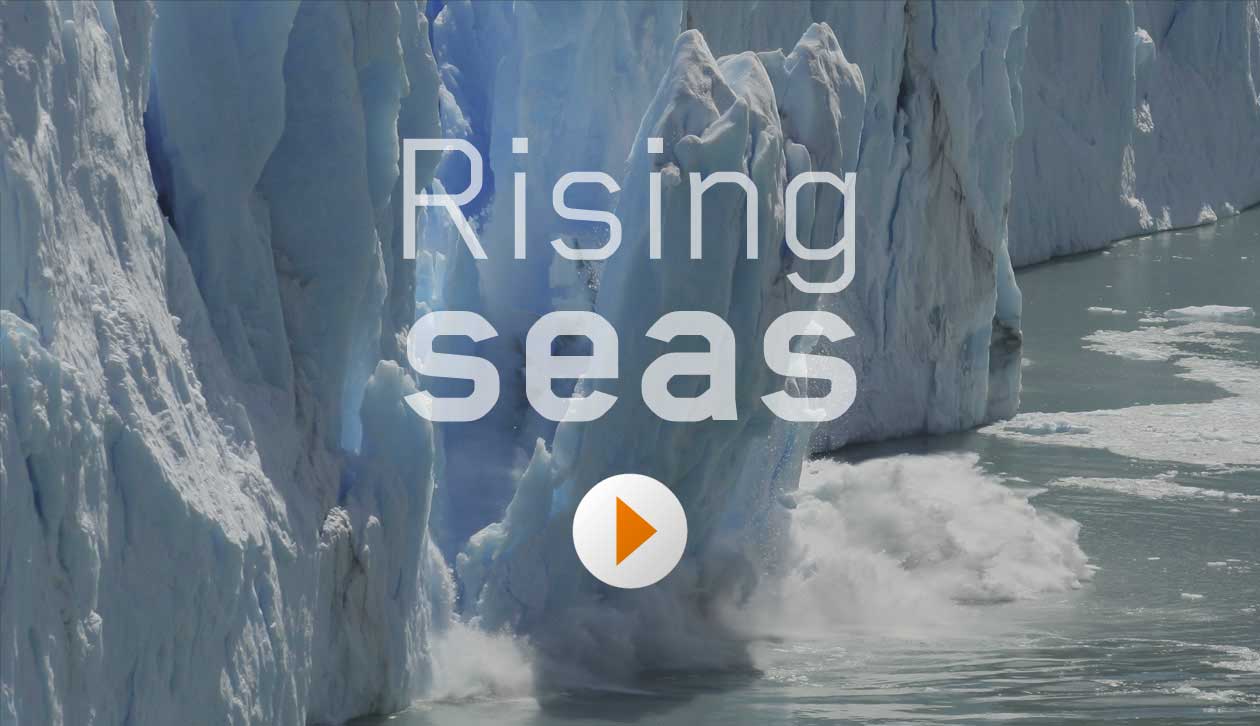
Rising seas
One of the Earth’s biggest threats from climate change is rising sea levels. Many global populations live in a region with a direct threat. Use this page to find out more about the way in which Antarctica is contributing to sea level rise, and find out what regions may experience the impacts of sea level rise first.
Antarctica’s Contribution to sea level rise
Approximately 98% of Antarctica is covered in thick ice, which means it has the potential to raise global sea level rise by a lot – approximately 58m! Because of the sea level rise potential, it is really important that Antarctica is monitored to see how much extra sea level it is contributing each year.
However, not all ice on, and around Antarctica is contributing to changing sea levels in the same way. This is because some ice is already floating and therefore has already displaced water in the oceans. The most common example of this is ice shelves.
Ice shelves are floating extensions of land ice which when calved, they do not raise the sea level by anything. However, this does not mean that the loss of these icy features are no concern. If the ice shelves were to disappear it would mean that the ice on the land which is not displacing water could rapidly retread and calve directly into the ocean, contributing to sea level rise.
Below we will read about an example of the Thwaites Glacier and how that is causing large issues for Antarctica’s sea level contribution.
The Thwaites Glacier
Certain areas in Antarctica are threatening sea level rise more than others, this is because they may be more in contact with the warming ocean and are calving at much faster rates. This is particularly important for the West Antarctic Ice Sheet as it is largely at, or below the sea level, this makes the glaciers on this portion of the continent at threat to calving and contributing to sea level rise.
One glacier that scientists are concerned about is the Thwaites Glacier. Click here to learn more about why scientists are concerned.
Who floods first?
Before you start this activity download and read the information about how each of the places could be affected by rising sea levels.
Interact with the map and label each of the most at risk places – The race is on to see who can complete their map thoroughly and accurately in the fastest time!

-
Discuss the decisions you made with your classmates.






